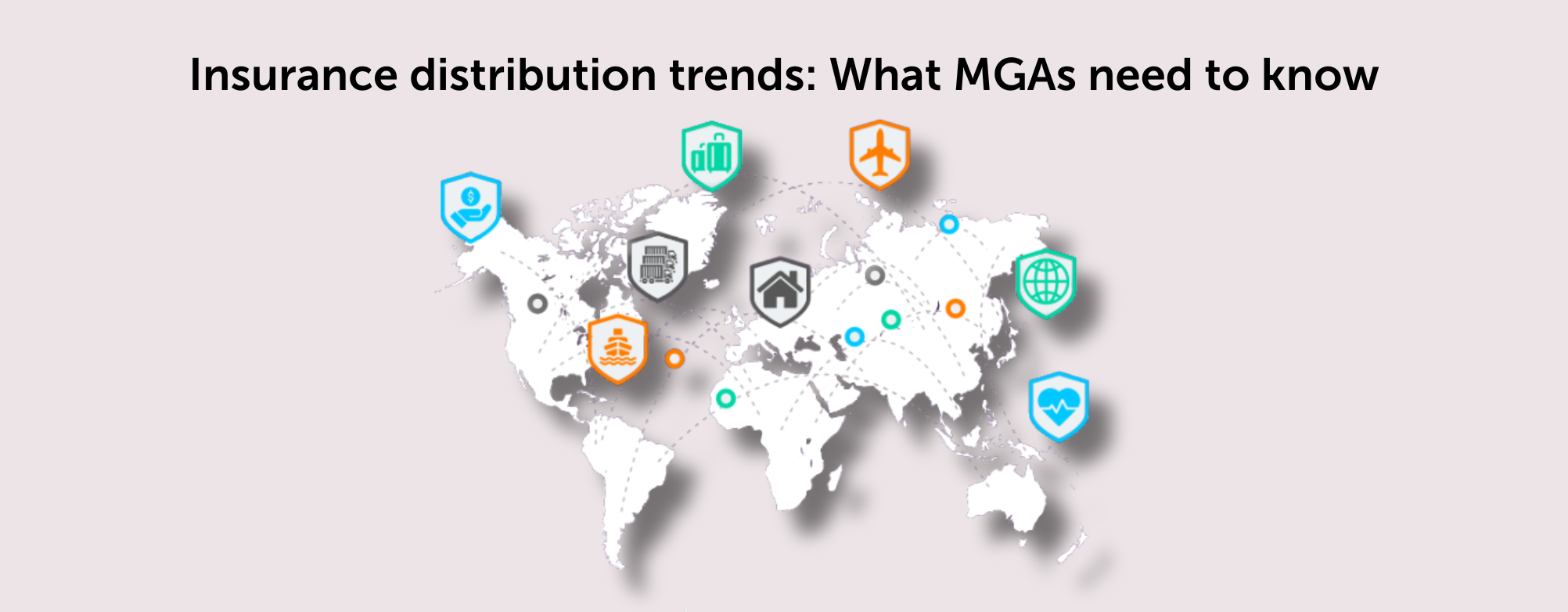Insurance distribution trends: What MGAs need to know
How customers research and purchase insurance is evolving, as technology drives greater personalisation and convenience. Most customers no longer have the time or the patience for face-to-face meetings, and lots of form-filling. At the same time, economic challenges mean companies must try to do more with less, simultaneously increasing efficiency in their insurance distribution strategy, while also driving greater ROI.
Regularly reviewing and updating insurance distribution models is vitalto overcome these challenges and align with policyholders’ evolving preferences and expectations. And with new technology and channels emerging all the time, MGAs and insurance companies have even more scope to innovate.
Insurance distribution trends
There’s no one-size-fits-all solution to insurance distribution. What works depends on the type of insurance, the customer segment, and the geographical market. While some products lend themselves to a fully online, self-service approach, others are still too complex for digital sales. Taking a tailored, omnichannel approach is key, and every insurance company or MGA should be constantly reassessing their balance of distribution channels and the technology they have in place to maximise conversion.
Here are the key trends they should be focusing on:
Customer-centric distribution
Effective insurance distribution starts with a deep understanding of the customer, through collecting and analysing the right data. The risk and customer landscapes today move fast, and companies will only stay relevant by understanding the risks customers face, how they behave, and where they go for insurance information. That enables MGAs and insurance companies to design their entire product and distribution strategy to maximise the rate of conversion, constantly testing and learning to see what works and what doesn’t. Plus, data isn’t just invaluable for winning new customers, but also for cross-selling and upselling amongst existing customers to improve customer lifetime value.
Tech and data-enabled broker relationships
Brokers have always been the most popular distribution channel for riskier insurance products, and this preference continues: brokers controlled an incredible 82% of commercial insurance business in the UK in 2023. But how insurers and MGAs are supporting brokers is changing, as data and technology enable them to target the most profitable customer segments and utilise AI and digital tools to process broker submissions and generate quotes quickly and efficiently, with minimum legwork.
For example, Insly’s AI-powered tool, FormFlow, enables brokers to submit customer and risk details to underwriters in any format, including Word, PDF, email, or even handwritten notes, and the system will automatically upload it in the right format to be processed by quote and bind systems. This eliminates the need for brokers to enter data manually into numerous systems, and ensures underwriters have the data they need, without spending time rekeying submissions. Insly estimates that it can triple MGA’s broker submission processing power, ultimately helping to boost sales.
Highly personalised D2C approach
While brokers still dominate much of the market, there is a significant opportunity for businesses to invest in selling direct, particularly for consumer and SME insurance which are simpler and driven by life events and growth milestones. D2C sales mean no commissions to pay and give companies the chance to own the whole customer relationship, which is beneficial for driving cross-sell and upsell opportunities, as well as renewals. However, companies should be aware that selling direct is a big investment, with significant marketing spend required.
Insurers and MGAs in this space are competing to offer the most flexible and personalised approach, with on-demand and usage-based insurance currently coming to the fore, enabling customers to switch their cover on and off as required. Meanwhile, providers are increasingly drawing on AI and automation tools to streamline the buying process, using chatbots, automated underwriting, personalised product recommendations, and beyond, making it as easy and convenient as possible with minimal form filling.
Insurance management platforms like Insly can streamline the customer onboarding process from start to finish. For example, MGAs and insurers can integrate their insurance underwriting tools into CRM systems, notifying customers when it’s time to review or renew their policies. Automated underwriting platforms also being huge time and cost advantages, reducing the time it takes to underwrite a claim by up to four hours.
Embedded Insurance and partnerships
Embedded insurance is nothing new, for example, the idea of buying travel insurance with a holiday booking, or gadget insurance with your phone has been around for years. What has evolved are the breadth of insurance products being sold this way, so it is now possible to purchase car insurance when you buy a car, or home insurance when you take out a mortgage. As a result, the sector is expected to own $722 billion in gross written premiums (GWP) by 2030.
Embedded insurance software enables insurance carriers and MGAs to reach a whole pool of new potential customers, and manage these policies through low-touch, automated systems. However, it’s important to keep an eye on the risks, with regulators currently looking at how to handle compliance when sales go through a partner company. Platforms like Insly can help to ease this concern, giving MGAs and insurers complete control and visibility of their book of business, throughout the customer lifecycle.
Buy-and-build distribution models
Private Equity has shown an increasing interest in the insurance sector in recent years and, for insurance companies, accepting external investment to drive M&A can be an effective way of reaching new markets. While M&A in the insurance sector dipped in 2024, predictions are that activity will pick up again as investors see opportunities to merge mid-sized companies with synergies across product types or vertical sectors. This comes with the added benefit of achieving economies of scale in software and technology solutions, to automate insurance distribution and policy administration.
Facilitating innovation in insurance distribution
Maximising existing and new distribution channels demands the right IT infrastructure for collecting data-based insights, building new products quickly, integrating with partners, and tracking results. With Insly’s low-code platform, MGAs and insurance companies can quickly begin exploring a whole range of distribution channels, while maintaining complete control of their critical business data and IT costs. With a low-code, modular setup, and API integration, businesses can optimise their distribution channels, without the need for coding experience or extensive time, resources, and R&D costs.
Please get in touch now if you want to see a demo of our platform’s capabilities.



